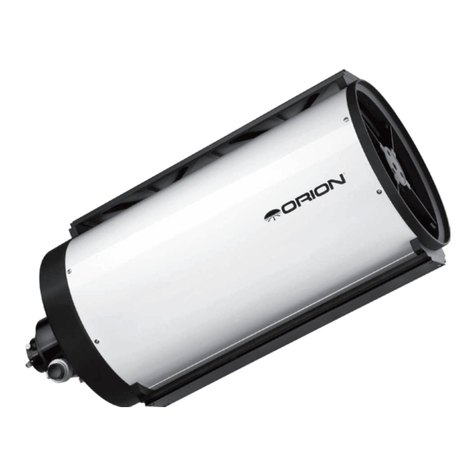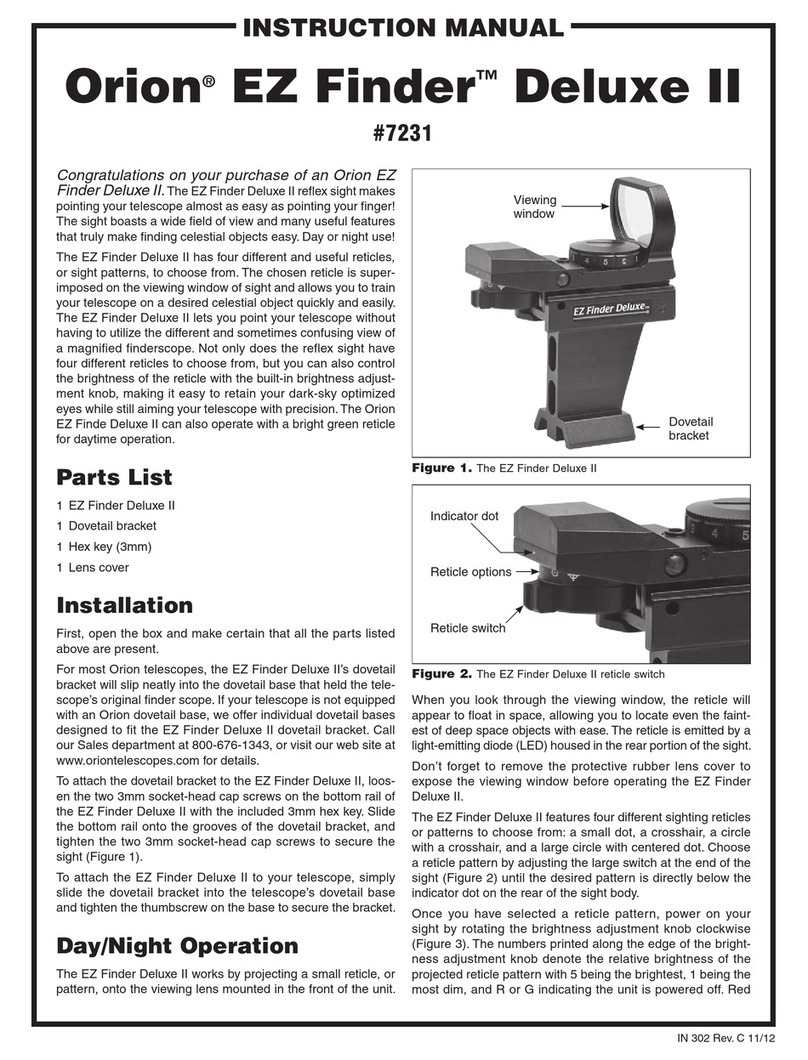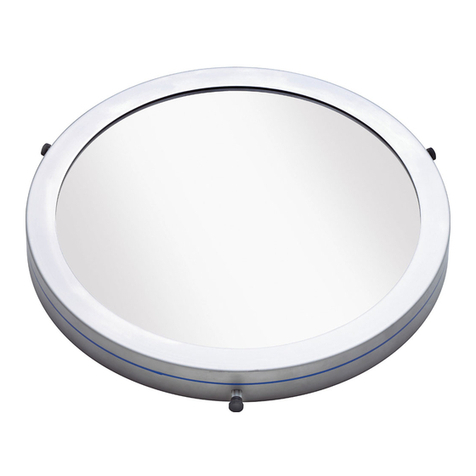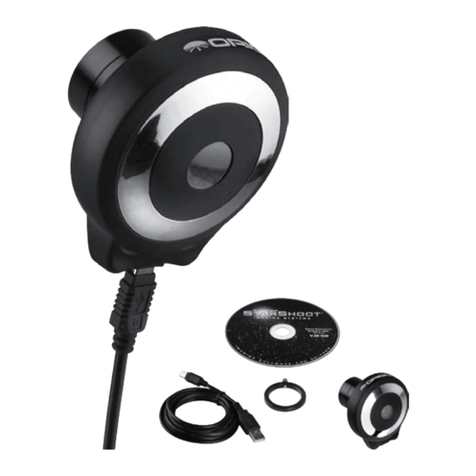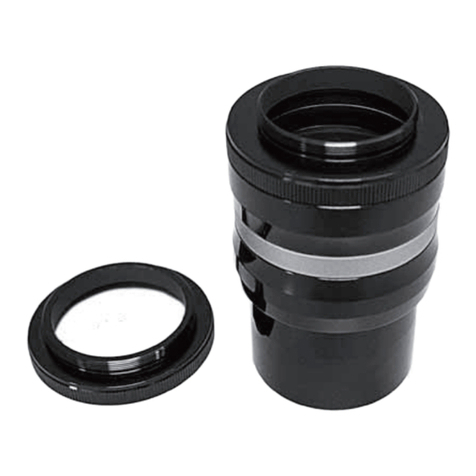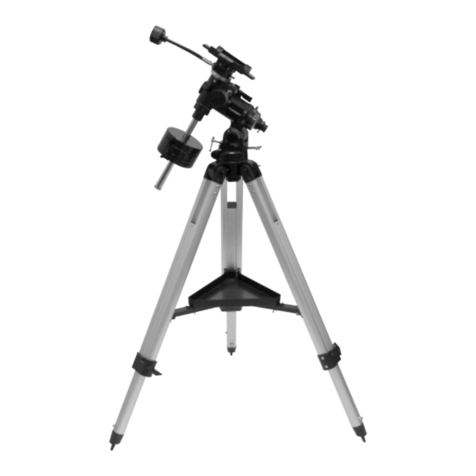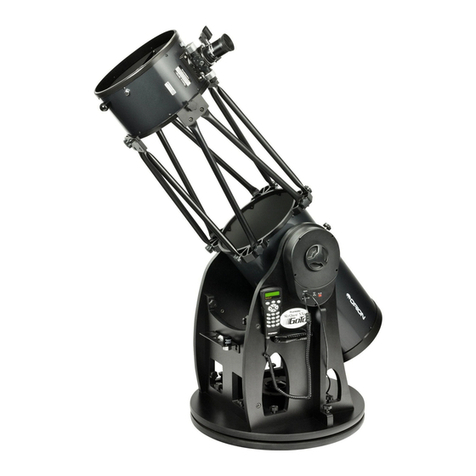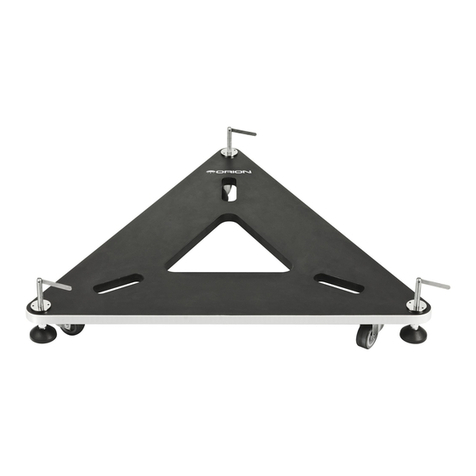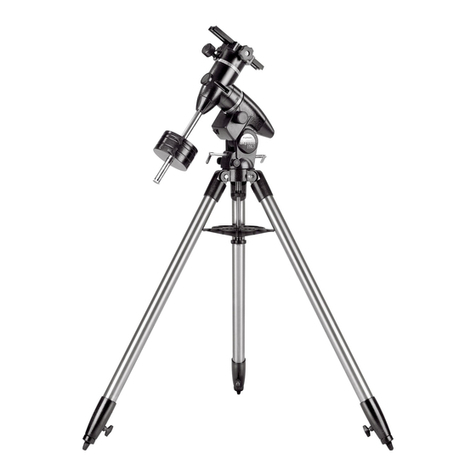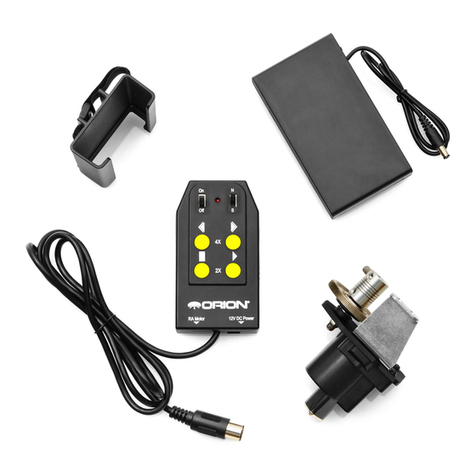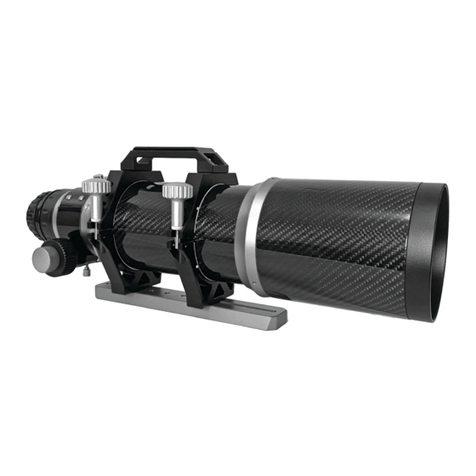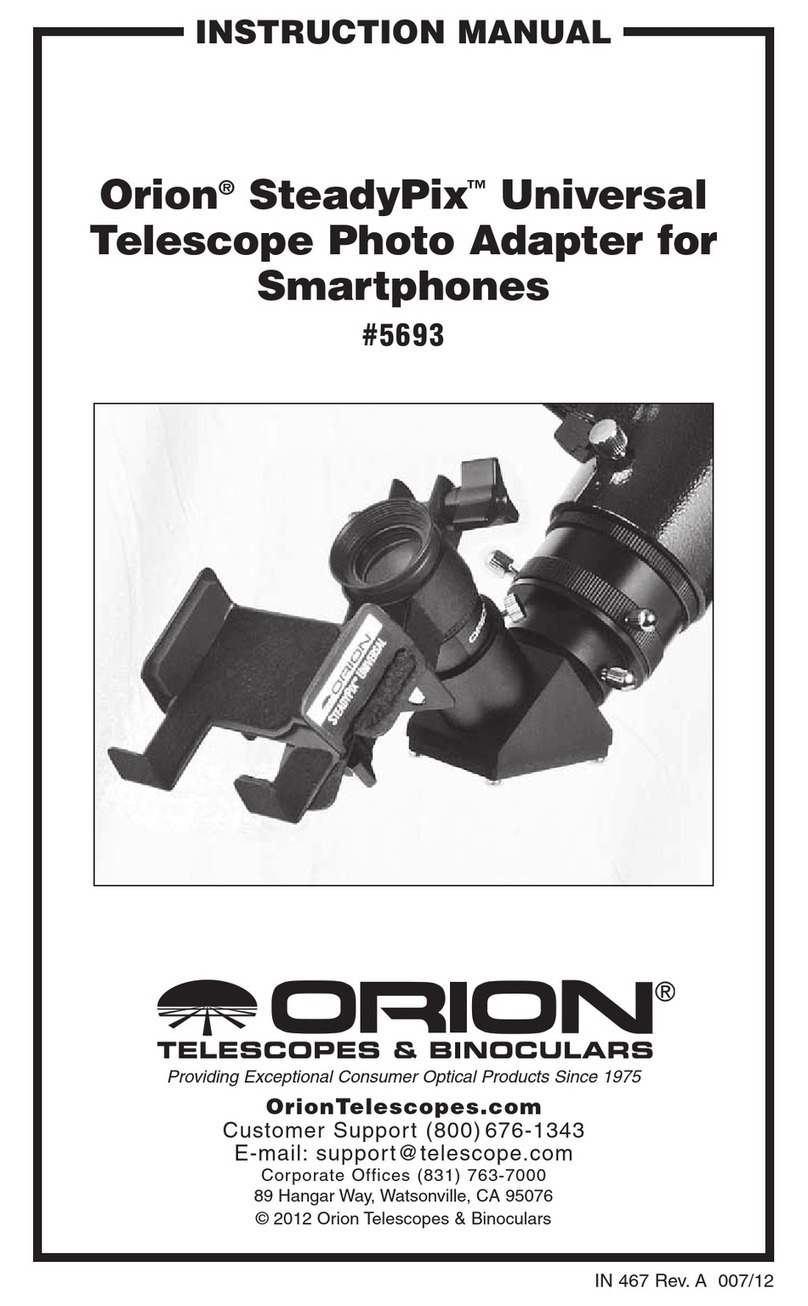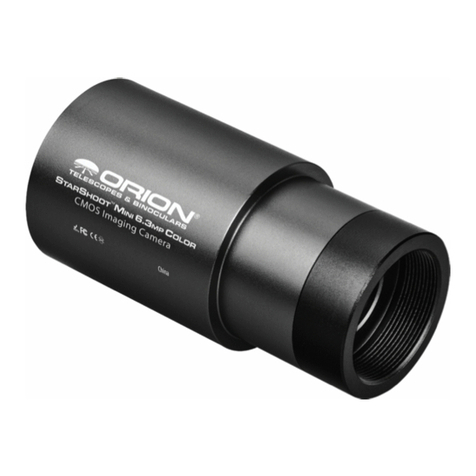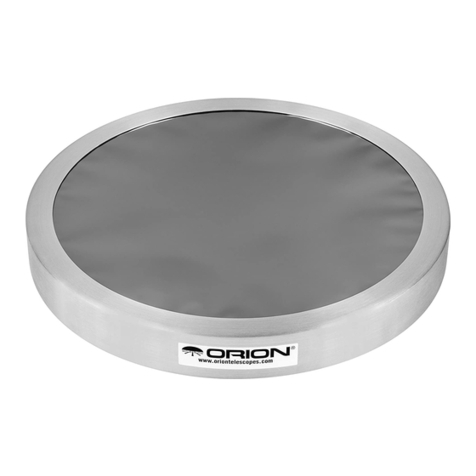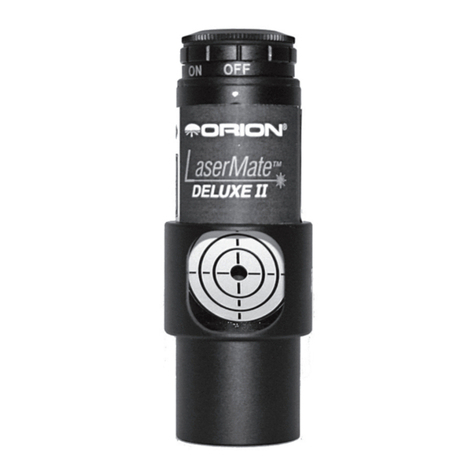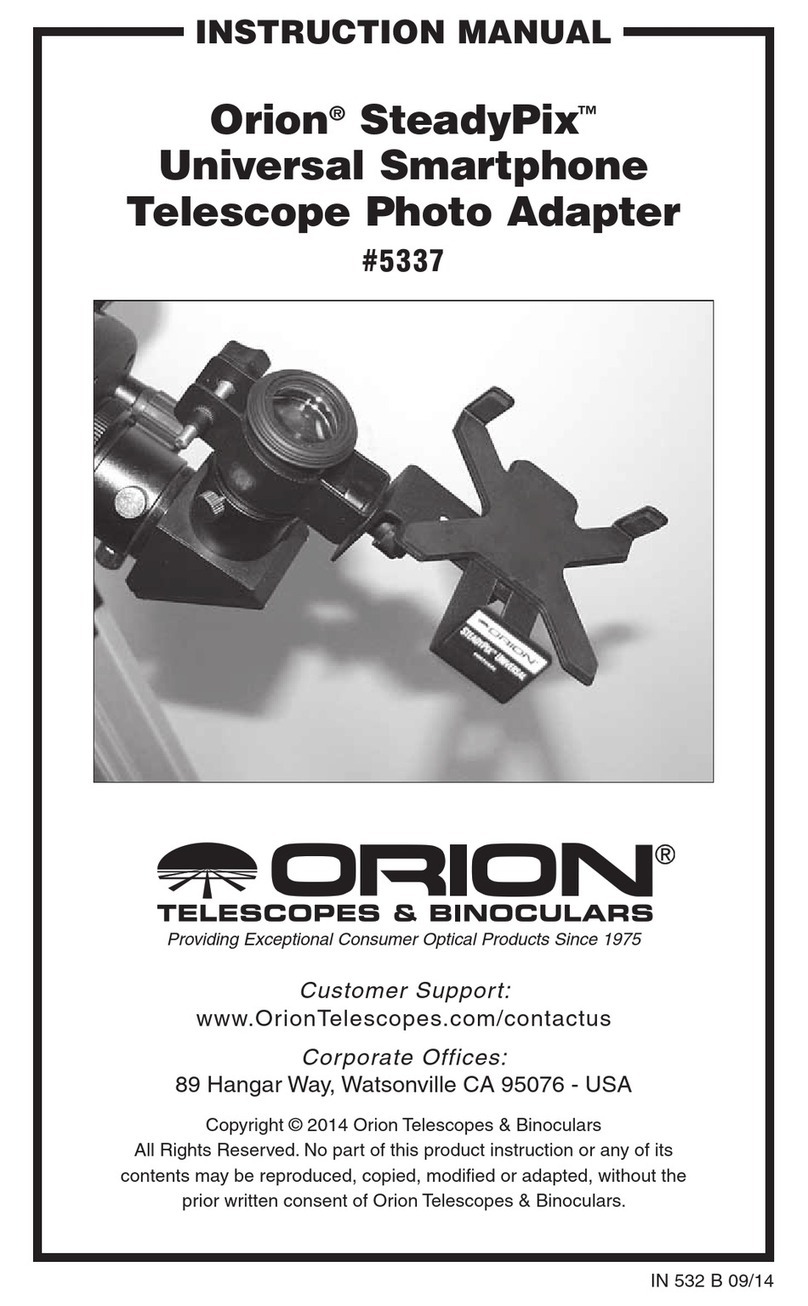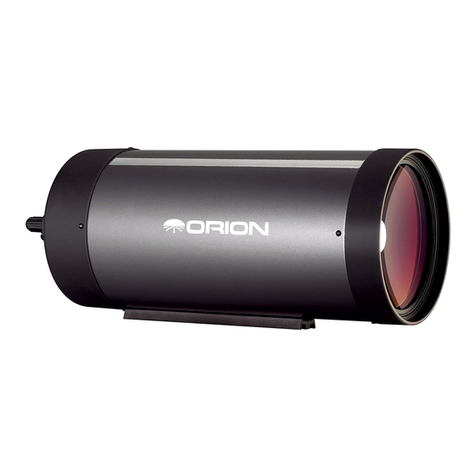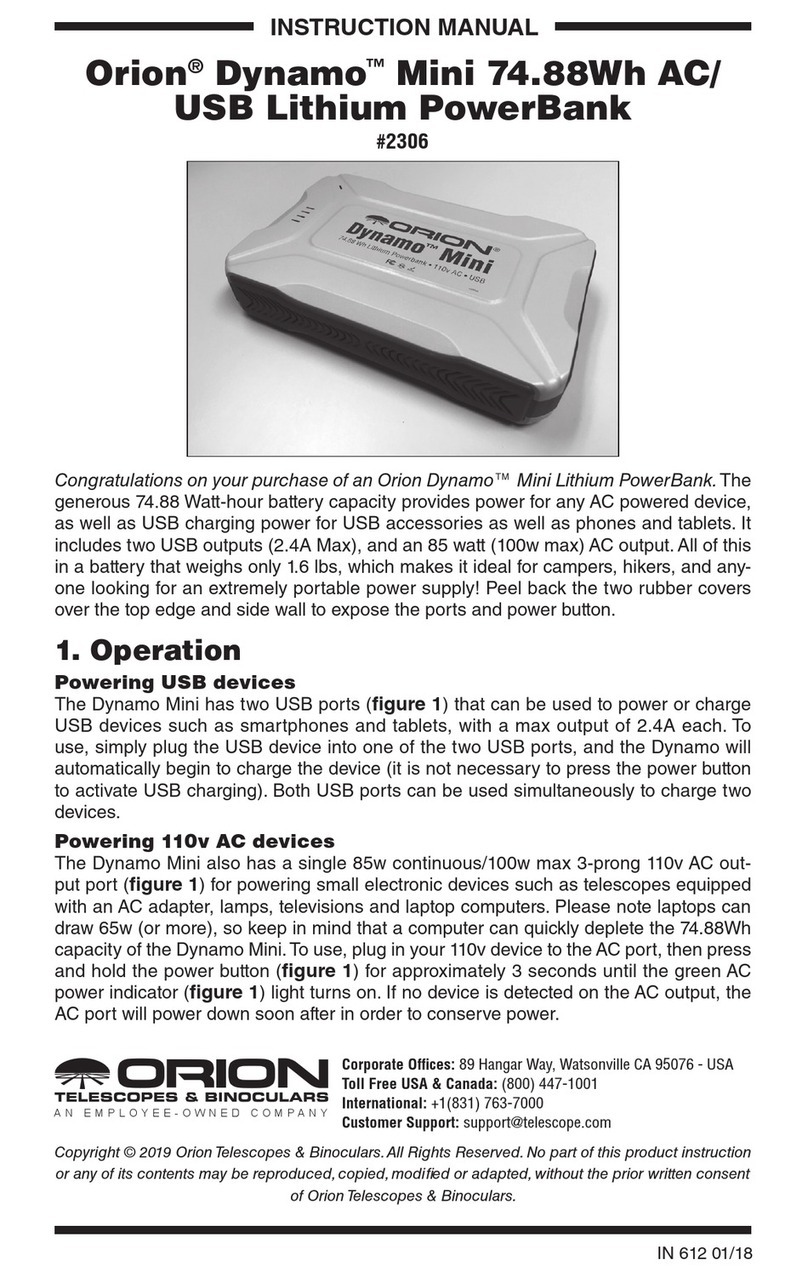
5
• Never look across or over objects that are radiating heat
waves. This includes asphalt parking lots on hot summer
days or building rooftops.
• Hazy skies, fog, and mist can also make it difficult to
focus. The amount of detail seen under these conditions is
greatly reduced.
• If you wear corrective lenses (specifically, glasses),
you may want to remove them when observing with
an eyepiece attached to the telescope. When using a
camera, however, you should always wear corrective
lenses to ensure the sharpest possible focus. If you have
astigmatism, corrective lenses must be worn at all times.
Celestial Observing
With your telescope set up, you are ready to use it for observ-
ing. This section covers visual observing hints for both solar
system and deep-sky objects as well as general observing
conditions that will affect your ability to observe.
Observing the Moon
Often, it is tempting to look at the Moon when it is full. At this
time, the face we see is fully illuminated and its light can be
overpowering. In addition, little or no contrast can be seen dur-
ing this phase.
One of the best times to observe the Moon is during its partial
phases (at crescent phases and around the time of first or third
quarter). Long shadows reveal a great amount of detail on the
lunar surface. At low power you will be able to see most of the
lunar disk at one time. Change to higher power (magnification)
to focus in on a smaller area.
Lunar Observing Hints
• To increase contrast and bring out detail on the lunar
surface, use eyepiece filters. A yellow filter works well at
improving contrast while a neutral density or polarizing filter
will reduce overall surface brightness and glare.
Observing the Planets
Other fascinating targets include the five naked eye planets.
You can see Venus go through its lunar-like phases. Mars can
reveal a host of surface detail and one, if not both, of its polar
caps. You will be able to see the cloud belts of Jupiter and the
great Red Spot (if it is visible at the time you are observing).
In addition, you will also be able to see the moons of Jupiter
as they orbit the giant planet. Saturn, with its beautiful rings, is
easily visible at moderate power.
Planetary Observing Hints
• Remember that atmospheric conditions are usually the
limiting factor on how much planetary detail will be visible.
So, avoid observing the planets when they are low on the
horizon or when they are directly over a source of radiating
heat, such as a rooftop or chimney. See the “Seeing”
section later in this section.
• To increase contrast and bring out detail on the planetary
surface, try using color eyepiece filters.
Observing the Sun
Although overlooked by many amateur astronomers, solar
observation is both rewarding and fun. However, because
the Sun is so bright, special precautions must be taken when
observing our star so as not to damage your eyes or your tele-
scope.
Never project an image of the Sun through the telescope.
Tremendous heat build-up may result inside the optical tube.
This can damage the telescope and/or any accessories
attached to the telescope.
For safe solar viewing, use a solar filter that reduces the inten-
sity of the Sun’s light, making it safe to view. With a filter you
can see sunspots as they move across the solar disk and facu-
lae, which are bright patches seen near the Sun’s edge.
Solar Observing Hints
• The best time to observe the Sun is in the early morning or
late afternoon when the air is cooler.
• To center the Sun without looking into the eyepiece, watch
the shadow of the telescope tube until it forms a circular
shadow. There are also special “solar viewing” finder
devices available that are designed for aligning a telescope
with the Sun.
Observing Deep-Sky Objects
Deep-sky objects are simply those objects outside the bound-
aries of our solar system. They include star clusters, planetary
nebulae, diffuse nebulae, double stars and other galaxies out-
side our Milky Way galaxy. Most deep-sky objects have a large
angular size. Therefore, low-to-moderate power is all you need
to see them. Visually, they are too faint to reveal any of the
color seen in long exposure photographs. Instead, they appear
grayish. And, because of their low surface brightness, they
should be observed from a dark sky location whenever possi-
ble. Light pollution around large urban areas washes out most
nebulae making them difficult, if not impossible, to observe.
Light Pollution Reduction filters help reduce the background
sky brightness, thus increasing contrast.
Viewing Conditions
Viewing conditions affect what you can see through your tele-
scope during an observing session. Conditions include trans-
parency, sky illumination, and seeing. Understanding viewing
conditions and the effect they have on observing will help you
get the most out of your telescope.
Transparency
Transparency is the clarity of the atmosphere, which is affected
by clouds, moisture, and other airborne particles. Thick cumu-
lus clouds are completely opaque while cirrus can be thin,
allowing the light from the brightest stars through. Hazy skies
absorb more light than clear skies, making fainter objects hard-
er to see and reducing contrast on brighter objects. Aerosols
ejected into the upper atmosphere from volcanic eruptions
also affect transparency. Ideal conditions are when the night
sky is inky black.
